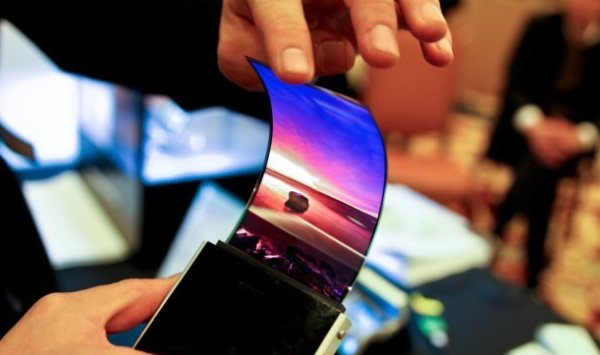Flexible OLED Market Is Anticipated To Reach USD 2,581 Million Globally By 2028
Many mobile gadgets and televisions currently use OLED display technology, which produces stunning and efficient lighting panels. Flexible OLED is a next-generation display technology that allows for the folding and curving of these panels on applications.
The Flexible OLED market was valued at USD 3.12 billion in 2020 and is predicted to grow at a CAGR of 39.46 percent to USD 63.35 billion by 2026. (2021 – 2026).
One of the world’s fastest-growing markets is the smartphone market. In order to have a competitive advantage over other companies, it also requires rapid technological developments in the services. The flexible OLED market is being driven by the demand for OLED displays for smartphones, which is reaching new highs every year.
The market for LED displays has also been pushed by low energy consumption, and flexible OLED displays have opened up new application possibilities in the sector. Furthermore, market growth will be fueled by innovative applications in the automotive and lighting industries.

Countries’ economy are expanding all across the world. As a result, the populace now has a bigger disposable income than previously, encouraging customers to purchase luxury items such as curved OLED televisions.
On the other hand, OLED technology’s weaker acceptability compared to LED displays is limiting the market’s growth.
The Report’s Scope
With a wide range of applications, flexible OLED technology provides high definition clarity. The flexible OLED market analysis took into account both OLED technology and their end-user applications in various areas around the world. OLED is widely utilised in consumer electronics, including television displays, cellphones, and other electronic devices. This innovative display technology allows for design and colour freedom. Convex and concave OLED designs are currently possible, and freeform designs are being researched. When compared to LCD and TFT-LCD display panels, flexible OLED provides better image quality and brighter displays. Furthermore, OLED has a basic design, and while the cost of OLED is currently high, it has the potential to be less expensive than LCD in the future. However, due to the limited temperature resistance of these panels, these display technologies are not widely deployed. OLED is problematic in direct sunlight because to its emissive nature. For vehicle applications such as the digital instrument cluster, infotainment, and illumination, advanced display technologies are also less durable than LCD and TFT-LCD technologies. Passive Matrix OLED (PMOLED) and Active Matrix OLED are the two types of OLED.
The market for flexible OLED for automotive displays will develop as investments and advancements in autonomous and electric vehicles, which are likely to be equipped with larger and advanced displays of flexible designs, increase. Europe and North America are the most important markets for technology, with Asia Pacific predicted to grow at the highest rate. Some of the main participants in the Flexible OLED market include OSRAM, HELLA, and LG Display. OSRAM, HELLA, and Audi are collaborating on the R2D2 project to develop three-dimensional OLED modules. The German Federal Ministry of Education and Research is funding the R2D2 project (BMBF).
Mobile phones and tablets are expected to grow significantly.
With the widespread adoption of smartphones, the need for high-definition ultra-high displays is rapidly increasing. Following in the footsteps of Apple and Samsung, which use AMOLED screens in their flagship models, more businesses are following suit.
According to LG Displays, one of the leading display OEMs, the smartphone category is the company’s second-largest revenue generator. The shipment of display panels is typically 10% to 12% higher than the shipment of mobile phone devices. According to the OLED Association, 1.4 billion smartphones were sold in 2018, and with advancements in AMOLED displays, demand for OLED technology is likely to continue to rise during the forecast period.
Many smartphone manufacturers have already released foldable smartphones in 2019. Samsung, for example, released the Galaxy Fold smartphone, which can be folded in half and unfolds to reveal a 7.3-inch screen. The usage of a flexible OLED panel for foldable phones has already gained traction in the market, and more firms are anticipated to follow suit in the near future.
Asia-Pacific is expected to grow at the fastest rate.
The economies of key countries in the area, such as India and China, are expanding, resulting in higher consumer disposable income. As a result, high-end electronic devices such as curved televisions and luxury cellphones are becoming more popular. As a result, the flexible OLED industry in the region is booming.
Despite the fact that the cost of producing LED panels is decreasing, the cost of producing OLED displays remains high. With significant mass production, the cost of production will be reduced. Leading OLED manufacturers, such as LG Displays, are expanding manufacturing in Guangzhou, China, and anticipate to create 3.8 million OLED panels in 2019.
Apple Inc. is investing in the development of its foldable phone and plans to open a premium iPhone assembly unit in India. With the start of this facility, its phones will be offered at lower prices than they are now in the country. As a result, demand will propel the flexible OLED market in the region forward.
Competitive Environment
Flexible OLED is a next-generation LED display technology. In terms of OEMs, only a few companies dominate the flexible OLED industry. As a result, the market is consolidating. Because the entrance barrier to the industry is low to moderate, new competitors will emerge in the near future to provide flexible OLED displays.
TCL Corporation started a pilot manufacturing line for their 6-Gen LTPS flexible AMOLED in Wuhan, China, in May 2019, and full-scale production would start in the fourth quarter of 2019. TCL’s Wuhan production line will be able to produce 45,000 6-Gen substrates each hour.
Samsung Electronics unveiled its new Infinity Flex Display, which features a flexible OLED panel. Earlier this year, the company unveiled the Galaxy Fold, a new foldable phone.
